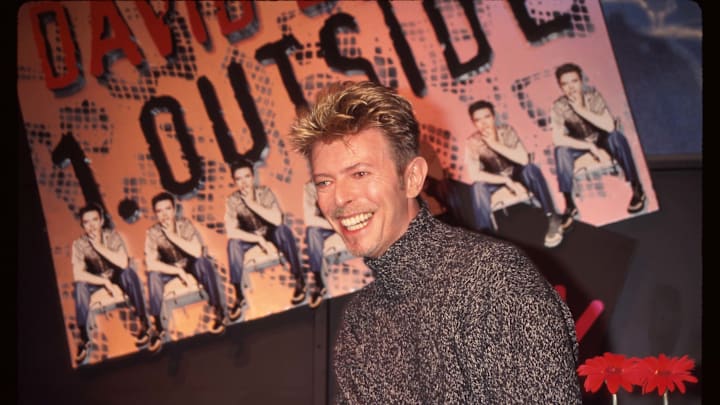David Bowie had pretty much already done it all in music before the release of 1995’s Outside, or as true freaks may refer to it, 1. Outside: The Nathan Adler Diaries: A Hyper-cycle. He’d made multiple quantum leaps from space-age novelty balladeer to glam rock god to white soul duke to dance pop prince, and most classic rock artists of his generation were already comfortably within their elder statesman periods by the mid-1990s.
Bowie had something else in mind, teaming with old friend and collaborator Brian Eno to create one of the most audacious and ultimately underrated albums of his entire discography. PopMatters once called it "the start of one of rock’s greatest third acts ever," and yet it remains an unsung gem in the extensive David Bowie discography.
Bowie was no stranger to the concept album, having built many of the defining records of his classic period around sometimes vaguely but always somehow also vividly defined narratives and characters. He was also fond of interpolating science-fiction ideas into these concepts, like the titular alien messiah of The Rise and Fall of Ziggy Stardust and the Spiders from Mars or the Orwellian mutant dystopia of Diamond Dogs.
For Outside, Bowie and Eno dreamed up an even more elaborate science-fiction story, about a cyberpunk-noir future where murder is becoming an art form, and if the album itself is light on A-B-C narrative specifics it is heavy on cinematic atmosphere. More than any other Bowie album, listening to Outside from beginning to end (it runs a feature-length 74 minutes in total) feels like watching a movie, albeit a very abstract and mysterious one.
David Bowie and Outside's conceptual cohesion
Outside’s conceptual cohesion doesn’t mean it’s free of standout hits. Songs like “The Hearts Filthy Lesson,” “Hallo Spaceboy,” and the weirdly yet pleasantly out-of-place album closer “Strangers When We Meet” are all perfect examples of Bowie’s pop songcraft, even as the former two also represent plenty of sonic and musical experimentation as well. Industrial acts like Nine Inch Nails and The Young Gods were influencing Bowie’s music at this time, and as album-elevating bangers these songs deserve to be as familiar to fans as “Suffragette City” or “Fame.”
Outside of its attention-grabbing singles, one of the defining features of Outside is its creepy spoken-word interludes, featuring a sometimes heavily audio manipulated Bowie embodying the story’s different characters, like world-weary Art-Crime detective Nathan Adler and tragic murder victim Baby Grace. Every Bowie album features the artist playing a different character in a sense, Outside could be the only one where he plays so many.
These interludes serve to move the plot, such as it is, forward, but they also contribute a lot of the album’s atmosphere and some of its most memorable moments. When the album was distributed in Mexico, it came enclosed with a special graphic novel fleshing out some parts of its overall concept, and thanks to Archive.org you can read it for yourself to go even deeper into the world of Outside.
If you’re a Bowie fan who prefers to stay in his 70s golden age, you’re missing out on a whole lot of vital work, but Outside stands above it all as perhaps the one time Bowie completely recaptured the creative spirit that animated his output during that decade.
